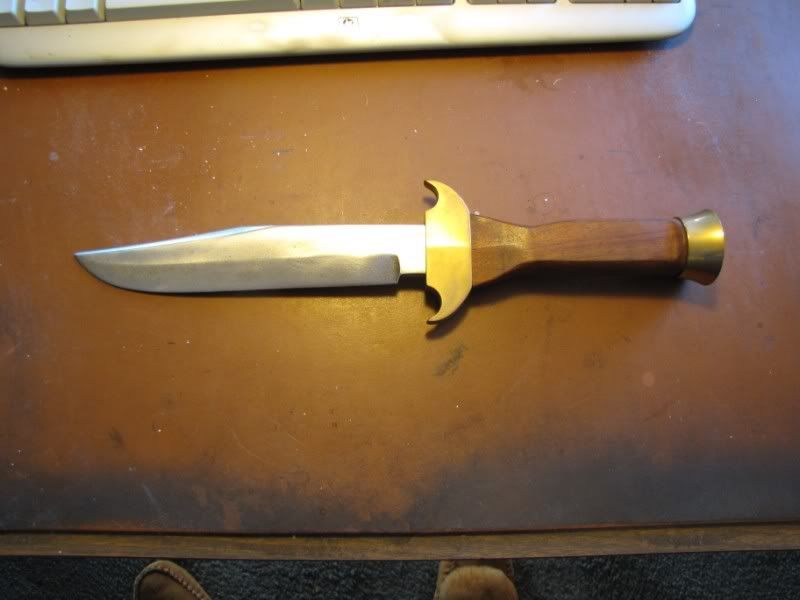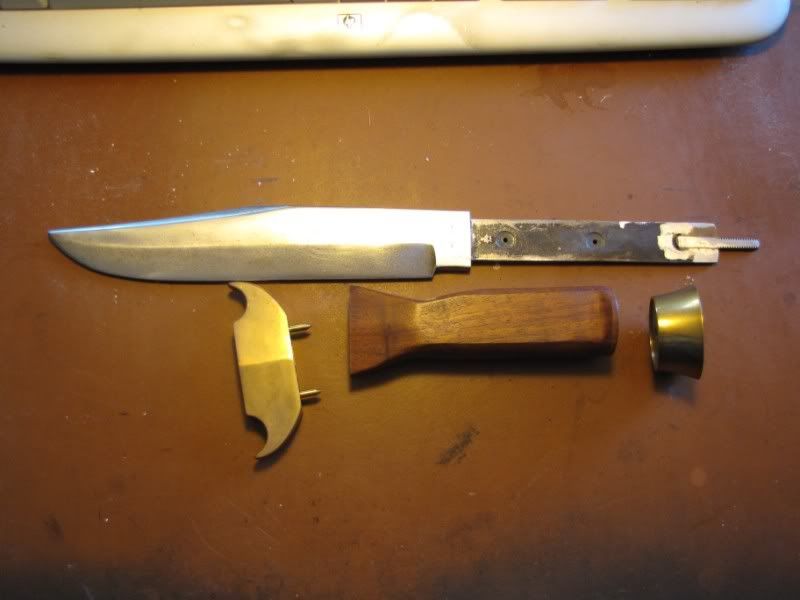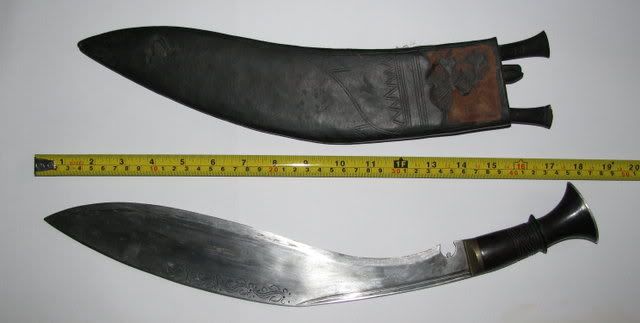mklotz
Well-Known Member
...said in my best imitation of Crocodile Dundee.

with an 8" long blade of 1/4" thick steel, this is more of a short sword than a knife.
I was given the blade by an old friend who claimed his father had bought it from a local when he served as an occupation troop in Germany just after the end of the war. The story was that the war-torn civilians would recycle steel from the detritus of war that surrounded them and forge it into items they could trade to the GIs for cigarettes and chocolate.
Now, my friend was an accomplished fisherman so I have to take this story with a large dose of salt - especially so since the blade has "MADE IN GERMANY" stamped into it. I doubt that shade tree German blacksmiths knocking out trade goods would bother to stamp their products with country of origin and, if they did, surely not in English.
Regardless, this formidable blade cried out for a handle worthy of its size.

I milled shallow slots in the two black walnut scales so that, when glued together, they would slide nicely over the haft. Once glued, they were shaped roughly on the mill and then finish shaped with wood carving chisels after which a linseed oil finish was applied. The quillon is solid brass, formed on the milling machine and fitted with two alignment pins that center and hold the scales. The pommel is also solid brass - a lathe job - and threads onto the threads already present on the haft.
Since I live in California where virtually anything sharper than a butter knife is illegal, I don't get much chance to show this monster. However, when I do, people instinctively back away when I pick it up to demonstrate its balance.

with an 8" long blade of 1/4" thick steel, this is more of a short sword than a knife.
I was given the blade by an old friend who claimed his father had bought it from a local when he served as an occupation troop in Germany just after the end of the war. The story was that the war-torn civilians would recycle steel from the detritus of war that surrounded them and forge it into items they could trade to the GIs for cigarettes and chocolate.
Now, my friend was an accomplished fisherman so I have to take this story with a large dose of salt - especially so since the blade has "MADE IN GERMANY" stamped into it. I doubt that shade tree German blacksmiths knocking out trade goods would bother to stamp their products with country of origin and, if they did, surely not in English.
Regardless, this formidable blade cried out for a handle worthy of its size.

I milled shallow slots in the two black walnut scales so that, when glued together, they would slide nicely over the haft. Once glued, they were shaped roughly on the mill and then finish shaped with wood carving chisels after which a linseed oil finish was applied. The quillon is solid brass, formed on the milling machine and fitted with two alignment pins that center and hold the scales. The pommel is also solid brass - a lathe job - and threads onto the threads already present on the haft.
Since I live in California where virtually anything sharper than a butter knife is illegal, I don't get much chance to show this monster. However, when I do, people instinctively back away when I pick it up to demonstrate its balance.






